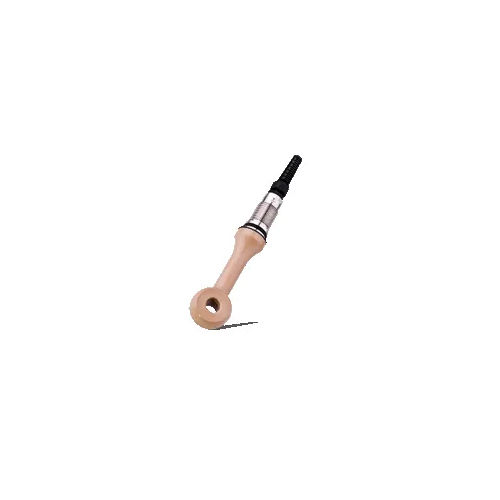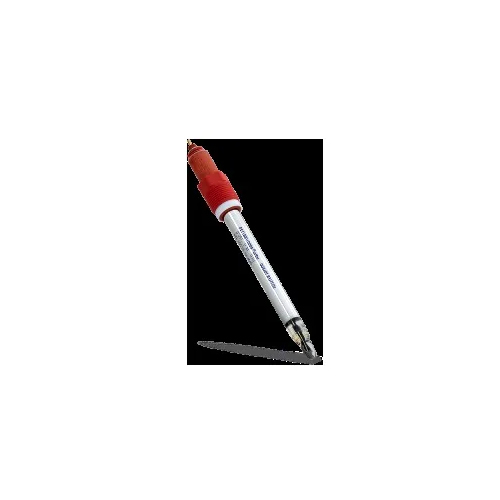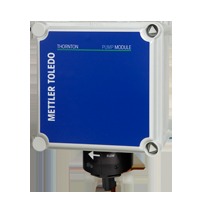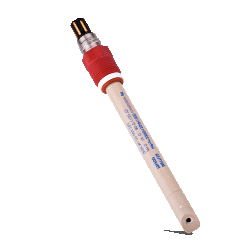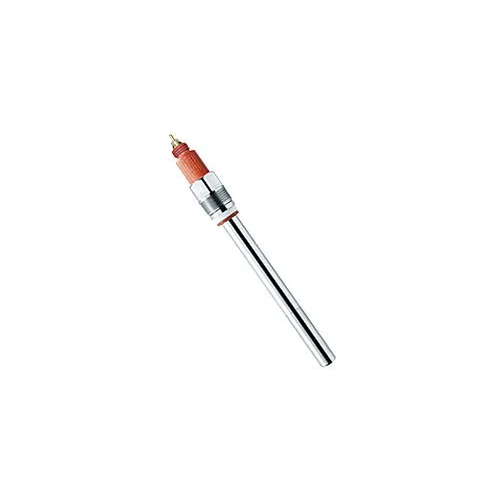Inductive Conductivity Sensors
Product Details:
Product Description
Toroidal / Inductive Conductivity Meter
The new InPro7250 Series of inductive conductivity meters from METTLER TOLEDO is designed for in-line measurements of conductivity/concentration levels of acids, bases and salts in liquid media. Main fields of application are in the chemical industry (CPI), pulp and paper processes, as well as monitoring industrial effluents. The design is based on an electrodeless toroidal principle (electrodeless). The sensors of the InPro7250 Series are fully compatible with METTLER TOLEDO "Advanced and Premium Line" transmitters offering two and four wire instruments
Low maintenance sensors and meters for harsh conditions
Easy-to-use sensors for measuring under the harshest conditions.
- Lowest maintenance due to robust design.
- Long lifetime through excellent chemical resistance.
- Reliability thanks to individual testing of cell constant to ensure highest possible measuring accuracy.
|
Power |
Electric |
|
Brand |
METTLER TOLEDO |
|
Material |
PEEK, glass-fiber reinforced (GF30) |
|
Model Name/Number |
InPro 7250ST Peek, InPro 7250HT Peek, InPro 7250HT PFA |
|
Conductivity |
0-2000 mS/cm |
|
Usage/Application |
Laboratory |
FAQ
1. An inductive conductivity sensor is what, exactly?
Ans - An inductive coil is used by an inductive conductivity sensor to gauge the conductivity of a liquid or solution. Environmental monitoring, industrial process control, and water treatment are just a few examples of the industrial uses for it.
2. Describe the operation of an inductive conductivity sensor?
Ans - By measuring the resistance of the solution as an electrical current flows through it, an inductive conductivity sensor determines the electrical conductivity of a solution. To accomplish this, a current is run through an inductive coil hung in the solution. The relationship between the solution's conductivity and resistance is linear.
3. Why is utilising an inductive conductivity sensor advantageous?
Ans - The key benefits of employing an inductive conductivity sensor are that it can measure a wide range of conductivity values, is extremely accurate, and needs no maintenance. It is ideal for tracking changes over time because it can also detect extremely slight conductivity changes.
4. What drawbacks are associated with the use of an inductive conductivity sensor?
Ans - An inductive conductivity sensor's principal drawback is that it is susceptible to interference from other electrical fields, such as those produced by motors and wires. It is also ineffective for determining low conductivity values.
5. What uses can an inductive conductivity sensor be put to?
Ans - Industrial applications include water treatment, industrial process control, and environmental monitoring frequently use inductive conductivity sensors. Additionally, they are employed in medical settings to monitor the body's electrolyte concentration and in dialysis machines.

Price:
- 50
- 100
- 200
- 250
- 500
- 1000+
Other Products in 'Process Analytics' category
 |
Mettler-Toledo India Private Limited
All Rights Reserved.(Terms of Use) Developed and Managed by Infocom Network Private Limited. |
 English
English Spanish
Spanish French
French German
German Italian
Italian Chinese (Simplified)
Chinese (Simplified) Japanese
Japanese Korean
Korean Arabic
Arabic Portuguese
Portuguese
